Table of Contents
Breast calcifications are white spots usually detected on mammograms. They are notorious for being a sign of cancer, but are all breast calcifications cancerous? What are other causes of calcifications, and what symptoms can they produce? Is there any relation between calcium deposits in the breast and diet?
What treatment options are there for these deposits? All this and much more regarding breast calcification is acknowledged below. Different foods to prevent breast cancer are also addressed here.
Calcium deposits in breasts: Should you be concerned?
Calcium deposition in the breast is also known as breast calcification. It is not uncommon to find white spots on breasts in mammography (radiological investigation). These white spots indicate tiny calcium deposits (1). Calcium deposits can be of great concern as sometimes they signal serious underlying diseases. On the other hand, they may show inert or benign changes that should not cause concern (1).
Your radiologist will determine the size, shape, pattern, and many other features of calcification to categorize it. This classification can tell you if breast deposits should cause concern (1).
Breast calcification symptoms
Calcium deposits in the breast are painless and may signal underlying disease. They cannot be detected during routine physical examinations done by your doctor and can only be caught during radiographic screening (2).
Screening investigations are those tests that health guidelines recommend for a healthy person without signs or symptoms of disease. It is based on the average risk for that particular age group and patient population and based on known outcomes and the value added of the test (3).
For example, the USPSTF (United States Preventive Services Task Force) current draft recommendation from 2023 recommends that women between the ages of 40 and 74 should undergo mammography every two years (4). This is consistent with the American College of Obstetrics and Gynecology, which recommends mammography annually starting at age 40 (5). Mammography is an X-ray of the breast. Breast calcification can be detected during this routine screening, but there are no documented signs or symptoms related to breast calcification (4). What does calcification in the breast mean?
Calcium is a mineral usually present in blood and bones. Tissue Calcification refers to the deposition of this mineral in soft tissues. Calcium tends to deposit in places where there is dead or damaged tissue, inflammation, or cancerous cells are growing. This is the reason breast calcification is common in breast diseases, which we will discuss below. However, not only in diseased states, calcium can also deposit with aging in different tissues, including the breast (6).
Calcification can also occur after injury. For example, if you are wearing a seatbelt and caught in an accident, part of your breast in front of the seat belt line may get injured. Injured fat cells in the breast cause calcium accumulation that will appear as calcification on your routine mammograms (7).
Types of breast calcification
Based on the size of the deposits, calcification in the breast can be microcalcification or macrocalcification. The categorization based on size is done by looking at mammograms (7, 8):
- Macrocalcification (>2mm): they appear as white-colored dots or sometimes white dashes. They are mostly benign and do not indicate cancer as the underlying cause.
- Microcalcification (<1mm): they resemble grains of salt, very small and fine specks. They can be cancerous or non-cancerous and need to be investigated to rule out serious diseases.
Biopsy as a follow-up test for breast calcification
After calcium deposits appear on mammograms, mostly biopsy is suggested to rule out severe diseases such as cancer. During a biopsy, your doctor will take small pieces of your breast tissue and send them to a histopathology laboratory for microscopic analysis of those deposits. The result will confirm the underlying cause of calcification (2).
Calcium deposits in the breast are called breast calcifications and appear on mammograms as white spots. They are painless and do not cause any symptoms. They can be detected on routine screening mammograms of the breast that every woman should undergo after 50 years of age in one or two years. Calcification can be micro or macro, depending upon the size and patterns. Calcification can occur in diseases, after injury, or with aging. Their exact cause can be confirmed with biopsy results.

Understanding breast calcification causes
There are multiple causes of breast calcification, from benign to malignant. Some common causes are as follows (2, 6, 7, 9):
- Breast infections: Inflammatory processes that result from infections or abscesses can cause the deposition of calcium in diseased tissue
- Breast cysts: sacs filled with fluid inside the breast. They can be single in number or multiple. Examination of the cyst shows soft swelling. They usually resolve on their own. They can get calcified with time.
- Fibroadenoma: A non-cancerous breast lump. It usually develops between the ages of 15 and 35. It is a benign condition that may cause breast calcification. It usually resolves on its own.
- History of injury or surgery: Trauma to fat cells of breast tissue causes them to die. Calcium deposits on these dead fat cells cause calcification. This calcification is not worrisome as it does not increase cancer risk.
- Breast cancer: Cancer that arises from cells of the breast. Breast cancer is the second most common cancer in Women in the USA (10). There are multiple types of breast cancer. Microcalcification in mammograms may be a sign of breast cancer. A biopsy is taken to confirm the suspicious calcification on a mammogram, ensuring that the diagnosis of breast cancer isn’t delayed. Early diagnosis can help in early treatment.
- Mammary duct ectasia: It is a condition in which milk ducts get dilated and filled with fluid. These ducts become clogged, sometimes causing inflammation. Calcification can result from mammary duct ectasia.
- Prior radiotherapy in case of a history of breast cancer can also cause breast calcification.
- Breast arteries calcification: Walls of blood vessels in breast tissue can calcify in old age, which appears as calcification on breast mammograms. It does not increase the risk of heart disease or breast cancer; it is just a benign finding.
- Ductal carcinoma in situ (DCIS): it is a noninvasive form of breast cancer. You can think of it as the earliest stage of cancer that has not spread yet. It is characterized by the presence of abnormal cells inside the milk-producing ducts of the breast. DCIS is notorious for causing breast calcification, so whenever breast calcification is discussed, DCIS is mentioned separately with great emphasis.
- Aging: As you age, calcium maintenance in your body gets disturbed; it starts to deposit in many soft tissues, including the breast, blood vessels, joints, etc.
Other factors
Some less common causes of breast calcification on mammograms that are not due to breast diseases themselves are (11):
- Renal diseases
- Hormonal disorders such as hyperparathyroidism
- Tuberculosis
- Parasitic infections
- Breast Implants
- Breastfeeding
What foods cause breast calcifications?
Diet has nothing to do with breast calcium deposits. You may think that you have started eating more calcium-containing foods, but that’s not the case. There is no association between the amount of calcium intake and breast calcification. So, foods are not the trigger for calcification. Instead, some foods may cause diseases that lead to breast calcification, such as cancers. However, the direct link between food intake and benign calcification has not been identified (2, 7, 12).
Calcium can deposit in the breast in benign but also severe diseases. These include breast cysts, infections, injury, surgery, radiotherapy, fibroadenoma, aging, breast arterial calcifications, breast cancer, especially Ductal carcinoma in situ and mammary duct ectasia. Rare causes include renal disorders, hyperparathyroidism, breast implants, and tuberculosis. Breast calcification does not result from high calcium intake. Diet has no role in it.




How do you get rid of breast calcifications naturally?
Breast calcification, as mentioned above, is just a sign that tells us that something is cooking inside the breast. We do not need to treat or get rid of the breast calcification. Instead, we should find the cause and treat it accordingly.
All benign breast diseases such as breast cysts, breast arterial calcification, calcium deposits due to aging, post-surgery, or post-injury calcifications should not make you concerned. They mostly resolve on their own and are not harmful, so you do not need further interventions (11).
But one thing you should not forget is to get a follow-up if you have breast calcification on your mammogram. Serial monitoring of calcification is important to detect any change in its size or shape, in which case it needs further treatment and diagnostic workup (2).
If calcification is the result of grave diseases such as cancer, they cannot be cured naturally. Instead, extensive workup and medical management are required for its treatment, such as surgery, chemotherapy, and radiotherapy (12).
You can use additional home remedies, but they are not the sole treatment for breast cancer. They can be used as complementary treatments. Some herbs, such as echinacea, garlic, and green tea, can provide benefits in fighting breast cancer. Their details are discussed below (13). Always consult with your doctor first, as some herbs can have a negative interaction when used together with some medications.
Estrogen-positive breast cancer foods to avoid
Breast cancer can be classified based on receptors present in cancer cells. Estrogen-positive breast cancer contains cells that have a receptor responsive to estrogen (14). Estrogen is a hormone present in females. Breast cancer is multifactorial. Genetic as well as lifestyle factors play an attribute in the cause of cancer (15). Dietary habits should be modified when fighting cancer. Following diets should be avoided if you are diagnosed with positive breast cancer:
- Citrus fruits: Citrus fruits such as oranges and lemons should be avoided if you have estrogen-positive (ER+) breast cancer because these fruits interact with tamoxifen (Tamoxifen is a drug that modulates estrogen receptors which are involved in ER+ cancers). ER+ breast cancers are treated with tamoxifen, and citrus fruits decrease their effectiveness (16).
- Soy supplements and concentrates: They should be avoided with ER+ breast cancers. Soy concentrates are present in many foods, such as yogurt, beverages, baked goods, and confections. There is a lot of conflicting research regarding safe levels of soy, so doctors usually recommend avoiding them for the safe side (17, 18, 19).
- High-saturated fat diet: High-saturated fat diets containing foods such as butter, deep-fried food, red meat, and coconut oil should be avoided as they increase the risk of cancer progression. Saturated fats also reduce the chances of survival in diagnosed cases (20, 21).
- Alcohol: Alcohol should be avoided in ER+ cancer patients. Several studies have shown a strong association between hormone-positive breast cancers and alcohol intake (22).
- Avoid raw or improperly cooked meat or fish (23).
- Sugary foods: Try to limit the intake of sugary juices and desserts rich in processed sugars as they increase the risk of all types of cancers in the body, including breast cancers, and are particularly harmful in those already trying to fight breast cancer (24).
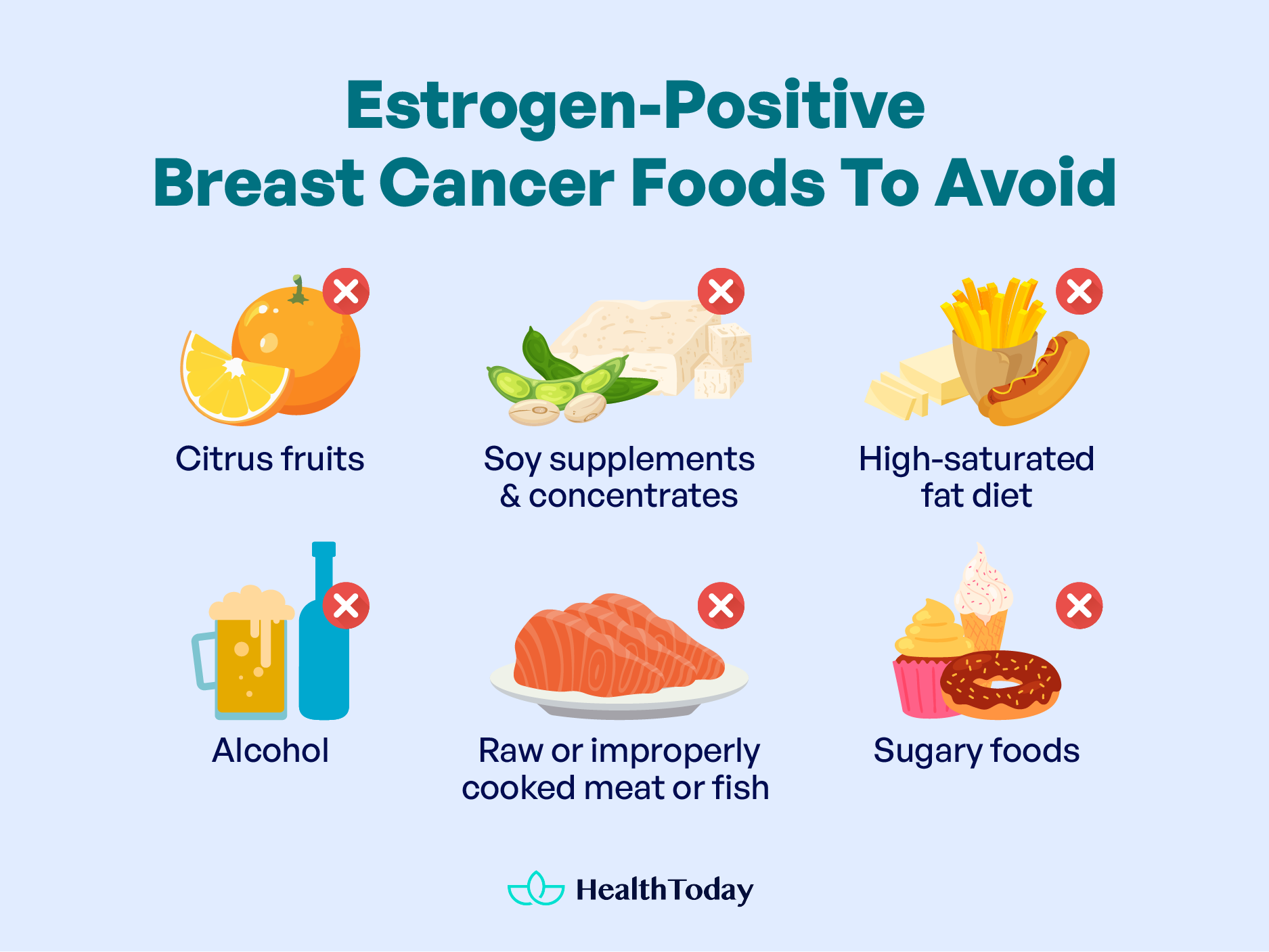

Foods that prevent breast cancer
Breast cancer is a result of genetic and environmental factors (15). You cannot change your genetic composition, but lifestyle factors can be modified to give you more benefit than harm. Dietary modification can decrease your chances of developing breast cancer.
- Fruits and vegetables: They have natural antioxidant properties and protect against cancers. You should at least eat 3 to 5 vegetables and 2 to 4 fruits per day as per recommendations (16, 17).
- Whole grains: They are plant-based food and a rich source of fibers and phytochemicals that decrease the risk of cancer. The recommended value is six servings per day (17, 16).
- Legumes: Legumes such as peas, beans, and lentils are rich in fiber, have antioxidant properties, and help prevent breast cancer (17, 18).
- Green tea: It is debated as to whether green tea can help reduce your risk of cancer. Some organizations recommend at least 1 to 4 cups per day (17, 19). However, green tea does contain caffeine, and no medical society has endorsed its use, so you should consult your doctor.
- Turmeric: This herb is used to give foods a yellow color. It has been indicated to reduce the progression of multiple cancers, such as breast and lung cancers (13).
- Vitamin D: It has many diverse roles in your body. Vitamin D helps prevent breast cancer. The easiest way to gain vitamin D is through sun exposure. If this is not possible due to weather conditions in your area, you can take supplements (17, 13).
- Lean protein: Increase your intake of poultry and fish. Decrease your intake of processed meats as it increases certain types of cancer (23). Processed meat can increase some chemicals in the body (heterocyclic amines) that are cancer-causing (carcinogenic) and hence increase the risk of cancers, including breast cancer (20).
- Hydration: The importance of an adequate amount of water intake is usually undermined. Hydration is very important to prevent cancer, as proper hydration at the cellular level is important for shutting down cancer-causing processes (carcinogenesis). Ideally, you should drink at least eight ounces of glasses a day (16, 21).
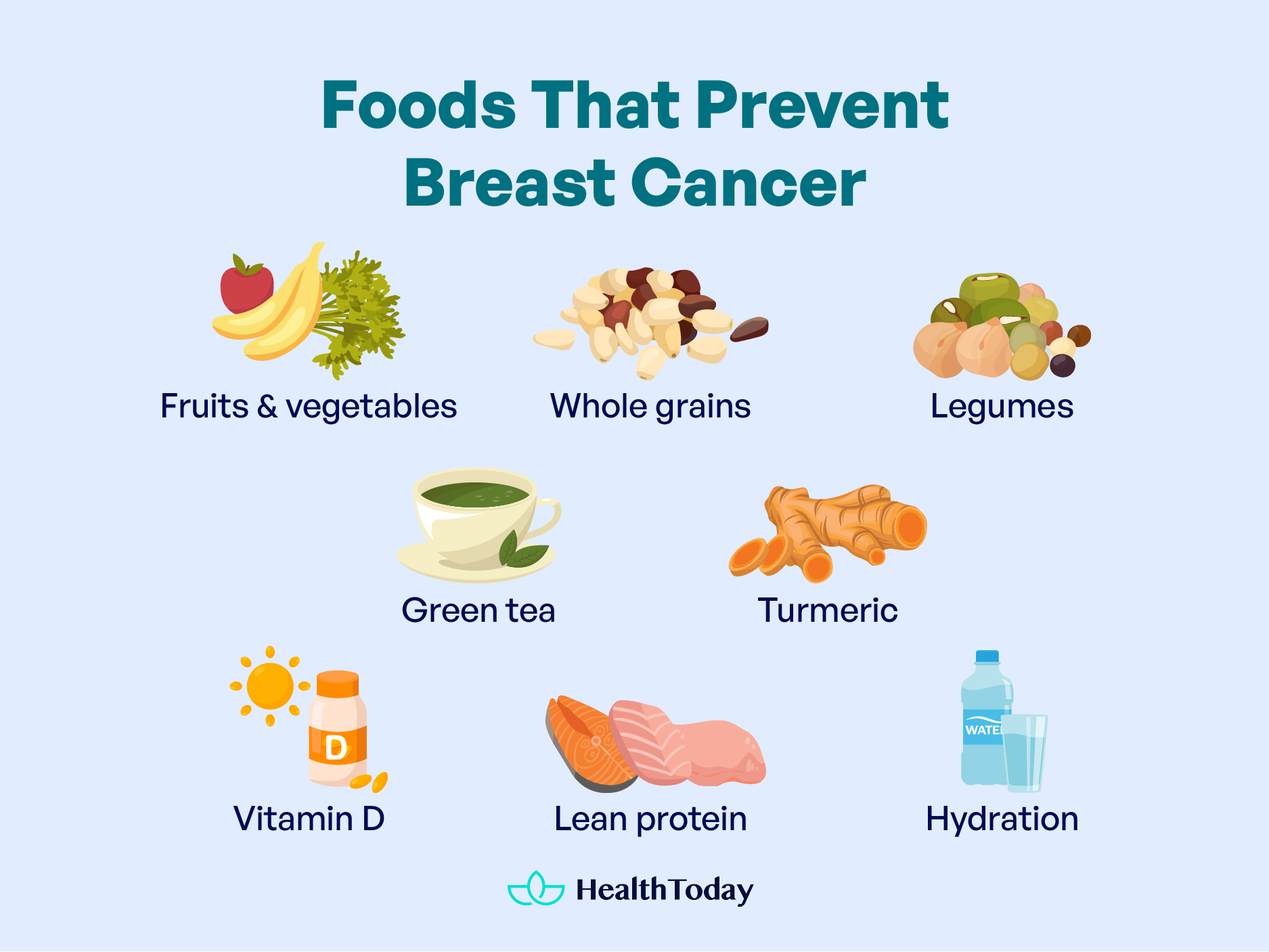

What percentage of breast calcifications are cancer?
Almost 12 to 40 percent of the suspicious calcifications are cancerous. Of these calcifications, microcalcifications have the greatest chance of being cancerous and are present in approximately 50 percent of breast cancers (2). Research is ongoing to improve diagnostic abilities and decrease the rate of false positives.
Can breast calcifications go away?
Very few studies have reported the disappearance of calcification in the breast. This self-resolving calcification is related to benign diseases. Most of the time, calcification remains even if the cause is not harmful (19).
Does caffeine cause breast calcifications?
What happens if calcifications are cancerous?
Some calcification patterns are more particular for cancers, such as irregular borders or fine appearance. If your breast calcification is suspicious of cancer, your doctor will perform additional tests to diagnose the condition as soon as possible. These additional tests include repeat diagnostic mammograms and biopsy (8).
After confirmation of cancer, your treatment will be started depending upon your stage of cancer (2).
Do breast calcifications increase with age?
Yes, calcium homeostasis gets disturbed with age. As you get older, calcium not only gets deposited in the breast but also in a lot of other soft tissues, such as blood vessels and joints. Senile breast calcification is a benign finding that has no harmful consequences (6).




Summary
Calcium deposition in the breast is called breast calcification. It can be detected on routine screening mammograms. Based on size, breast calcification can be of two types: microcalcification and macrocalcification. Breast calcification does not cause symptoms and has nothing to do with dietary calcium intake.
The various reasons for breast calcification include aging, breast cancer, breast infections, breast cysts, fibroadenoma, trauma, and mammary duct ectasia. Breast calcification patterns vary. Some suggest serious diseases, while others indicate benign causes. Your doctor will try to find the cause and treat it accordingly. Some breast calcifications are highly suspected of cancer.
People with breast cancer, which is of hormonal type, such as ER+ cancers, should avoid soy supplements, alcohol, saturated fats, and processed sugars. Foods that prevent breast cancer are fruits, vegetables, whole grains, legumes, green tea, vitamin D, and lean protein.






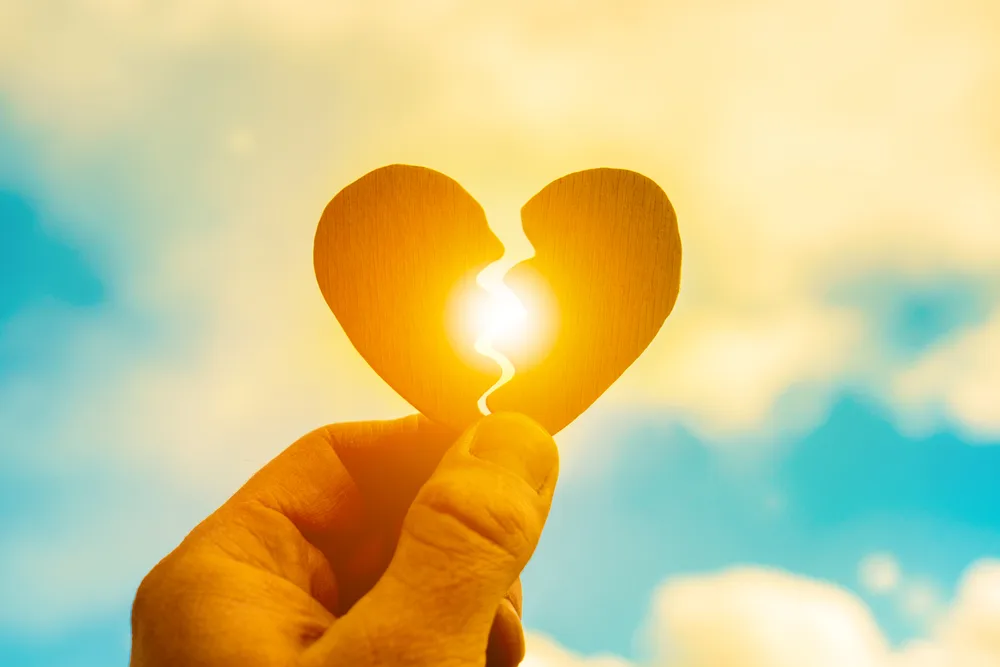

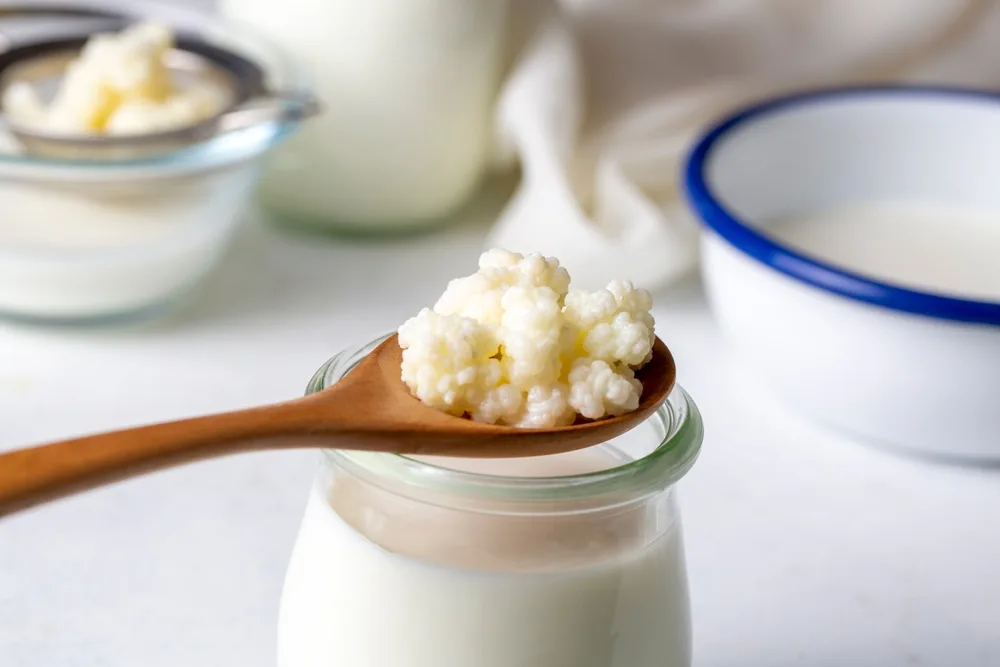

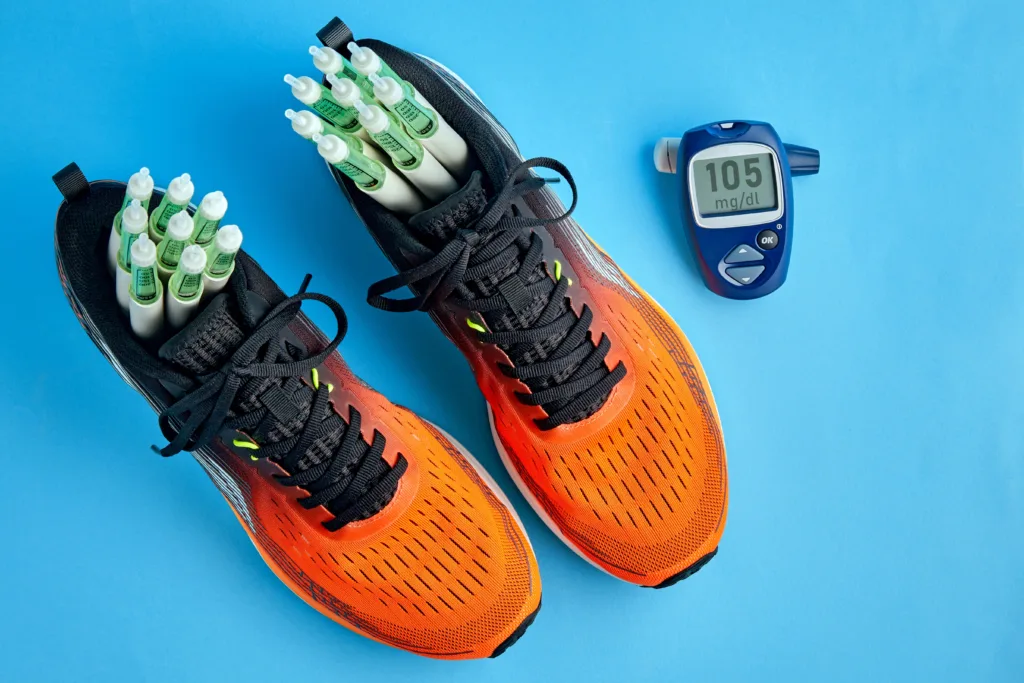

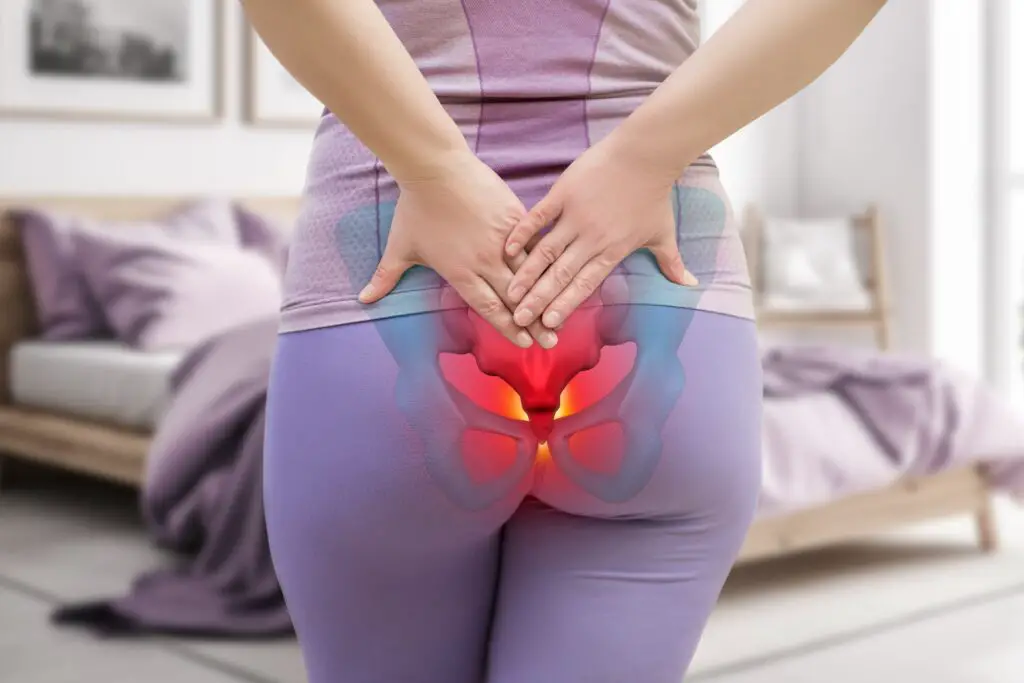

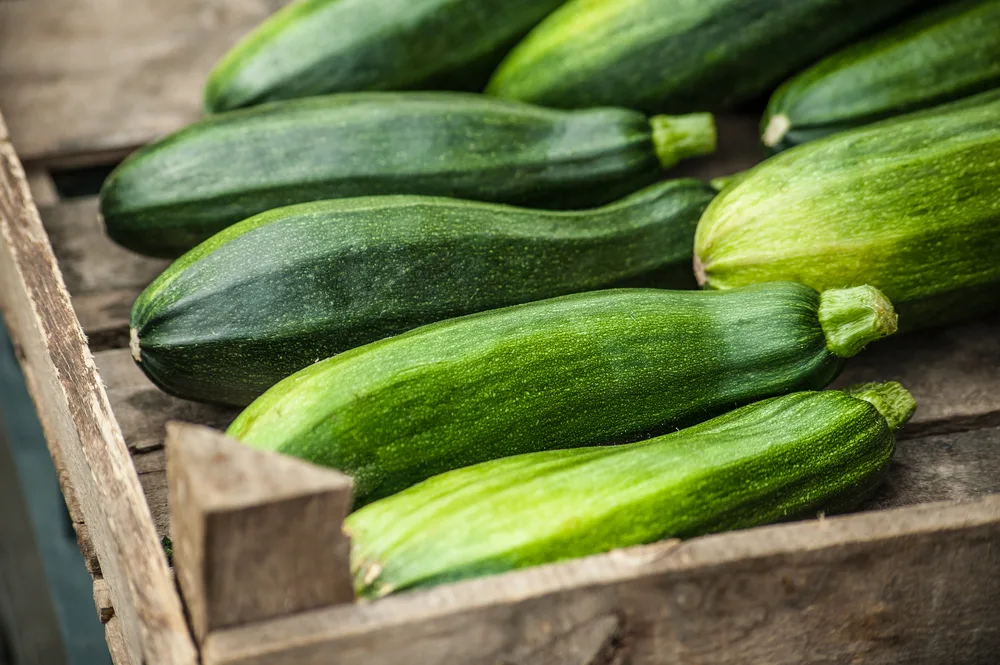


Comments
0